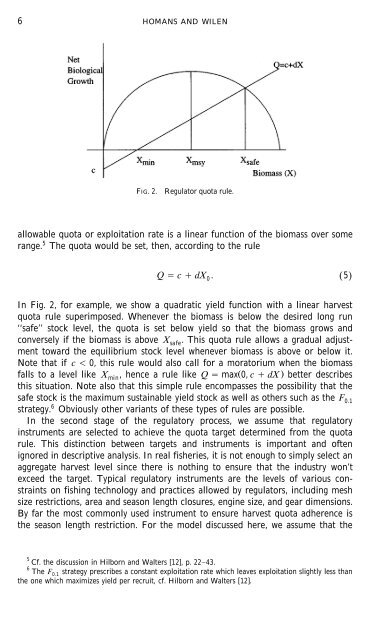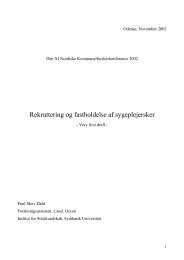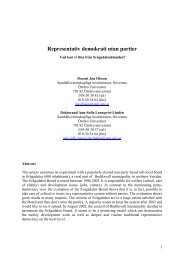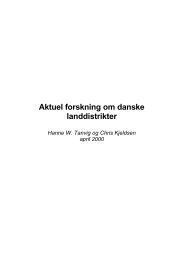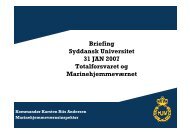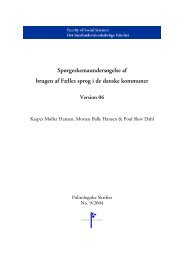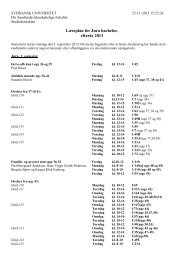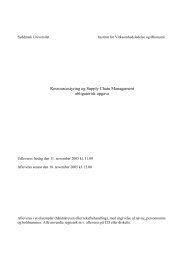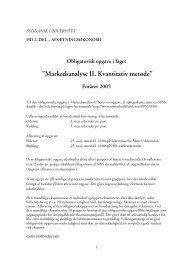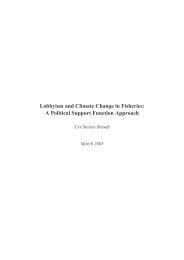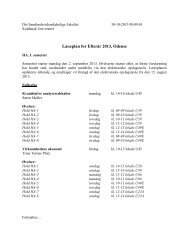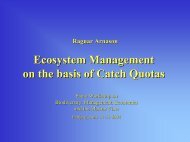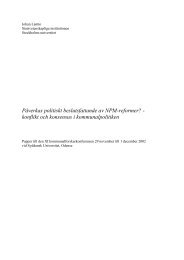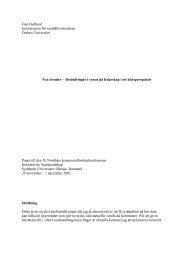A Model of Regulated Open Access Resource Use
A Model of Regulated Open Access Resource Use
A Model of Regulated Open Access Resource Use
Create successful ePaper yourself
Turn your PDF publications into a flip-book with our unique Google optimized e-Paper software.
6<br />
HOMANS AND WILEN<br />
FIG. 2.<br />
Regulator quota rule.<br />
allowable quota or exploitation rate is a linear function <strong>of</strong> the biomass over some<br />
range. 5 The quota would be set, then, according to the rule<br />
Q c dX 0. Ž 5.<br />
In Fig. 2, for example, we show a quadratic yield function with a linear harvest<br />
quota rule superimposed. Whenever the biomass is below the desired long run<br />
‘‘safe’’ stock level, the quota is set below yield so that the biomass grows and<br />
conversely if the biomass is above X safe. This quota rule allows a gradual adjust-<br />
ment toward the equilibrium stock level whenever biomass is above or below it.<br />
Note that if c 0, this rule would also call for a moratorium when the biomass<br />
falls to a level like X , hence a rule like Q maxŽ 0, c dX .<br />
min<br />
better describes<br />
this situation. Note also that this simple rule encompasses the possibility that the<br />
safe stock is the maximum sustainable yield stock as well as others such as the F 0.1<br />
strategy. 6 Obviously other variants <strong>of</strong> these types <strong>of</strong> rules are possible.<br />
In the second stage <strong>of</strong> the regulatory process, we assume that regulatory<br />
instruments are selected to achieve the quota target determined from the quota<br />
rule. This distinction between targets and instruments is important and <strong>of</strong>ten<br />
ignored in descriptive analysis. In real fisheries, it is not enough to simply select an<br />
aggregate harvest level since there is nothing to ensure that the industry won’t<br />
exceed the target. Typical regulatory instruments are the levels <strong>of</strong> various constraints<br />
on fishing technology and practices allowed by regulators, including mesh<br />
size restrictions, area and season length closures, engine size, and gear dimensions.<br />
By far the most commonly used instrument to ensure harvest quota adherence is<br />
the season length restriction. For the model discussed here, we assume that the<br />
5<br />
Cf. the discussion in Hilborn and Walters 12 , p. 2243.<br />
6 The F0.1<br />
strategy prescribes a constant exploitation rate which leaves exploitation slightly less than<br />
the one which maximizes yield per recruit, cf. Hilborn and Walters 12 .


